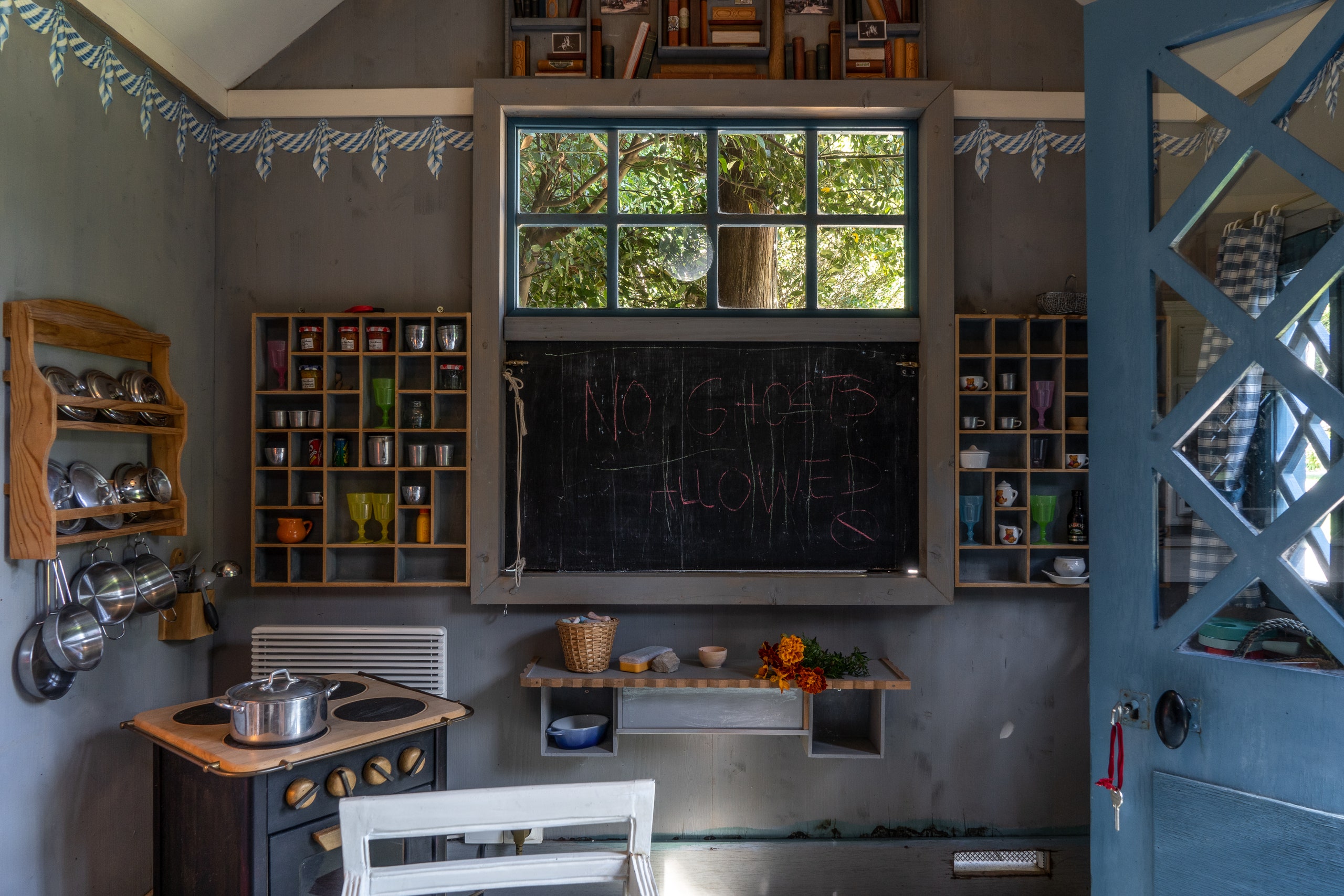‘It is not a doll’s house,’ stresses Dominique Lafourcade, sitting in her regular adult-sized kitchen in Saint-Rémy-de-Provence. The ‘Palazzo Alto’, located beneath an awning between the main house and the garden, is certainly too large, too grand, too magnificent, to be that. But nor is it big enough – not quite – to accommodate a roomful of grown-ups. Not without one or two mishaps.
‘It’s a child’s house,’ she clarifies. ‘Everything is to scale. The doors, for example, are 1.25m, as opposed to 1.8m. One of my very first projects was a little wooden house for my son, Alexandre. Later on, I restored it for Emma, my granddaughter, transforming it into a drugstore. A mother and her little girl came for tea and she was very impressed, but said it’s a pity the adults can’t enter. This was the start of building something perfect for children but that adults could also enter and sit down in.’
It’s this attention to detail – coupled with a keen sense of adventure – that makes Dominique’s creations so singular, each exerting a benign and mysterious power akin to magic.
‘It’s important to retain the spirit of a child,’ she explains. ‘It’s the basis of my work.’
When one herself, Dominique built her very first house in a mulberry tree. The second was more accomplished, built when she was a boarder near Paris. With the help of two friends, she made a cabin beneath a cedar branch. It was a local phenomenon, drawing visitors from the school. Her first commission, however, was some years later, at the bottom of a garden in Noves, a Medieval village in Provence. It set the template.
‘Each house has its own style and decoration,’ she says, ‘and exists in relation to the place and its owners. For example, grandchildren have initials sewn on to cushions. There’s always a chimney, often with an electric heater. I make paintings from recuperated cardboard. I’ve also made a stove with cigar boxes that belonged to my husband, Bruno.’
She doesn’t work alone. She regularly consults with François Reynier, a carpenter, who, along with his team, is both knowledgeable and ingenious.
‘The shape of the cabin is always the same,’ she says, ‘so it’s easier to work out the dimensions, put it on the truck, etc. We commonly use beech for the walls, zinc for the roof. But the details inside and outside are always different. I work closely with the clients, looking at the plot, discussing ideas. Then I’m given carte blanche.’
The ‘Cassina de Pierredon’ was one of her earliest commissions, for Italian clients in the Alpilles. The concept was simple. A locanda (or inn) that could be transformed into a school or a restaurant.
‘The girls and boys love to play head teacher or chef. So the furniture and accessories doubled as something else. For example, the desk could become a kitchen worktop.’
The ‘kitchen’, however, isn’t functional. ‘It’s for every age, so you can’t have fire or water, and it’s not designed for sleepovers. But you can have picnics and siestas.’
Elsewhere, in a big garden on an agricultural property near Eygalières, Dominique and her team built a kiosk, positioned close to a tennis court. The owner wanted a little house for their grandchildren, to be placed beneath an oak tree. ‘I was inspired to create a house in harmony with the setting,’ she says. ‘The interior reflects gardening, whether the flower pots, the watering can, or the old engravings of vegetables. My younger sister, Frédérique, helps me with painting, putting in nails, sticking, cutting, going shopping. She came to live with me when Bruno died and it’s a pleasure to have tea together like two giants in a lilliputian world.’
Even the cakes are made to scale. With crockery to match. ‘France is a country of antiques. Each time I travel, or go to a shop, I try to find something suitable.’ Otherwise she makes it herself.
‘Everything is recycled. I hate throwing things away. Wood, paper, plastic – you can be extremely creative with these materials.’
Downstairs, in Bruno’s old garage, she demonstrates this approach, placing a used coffee capsule into a vice and flattening it to a disc to make a necklace. The ‘Palazzo Alto’ is full of such tricks and sleights of hand.
‘It’s for my grandchildren,’ she says. ‘I love the Baroque façade, in the context of a contemporary atelier. Bruno, who was an architect, built the concrete steps. It was necessary to have a kitchen, to put the collection of copper pots into. One of my greatest passions is finding an object that’s just the right size.’
There’s also a bookcase. Each book is made out of cardboard, with photocopied covers, and includes Voyages Extraordinaires by Jules Verne. It could not be more apposite.

